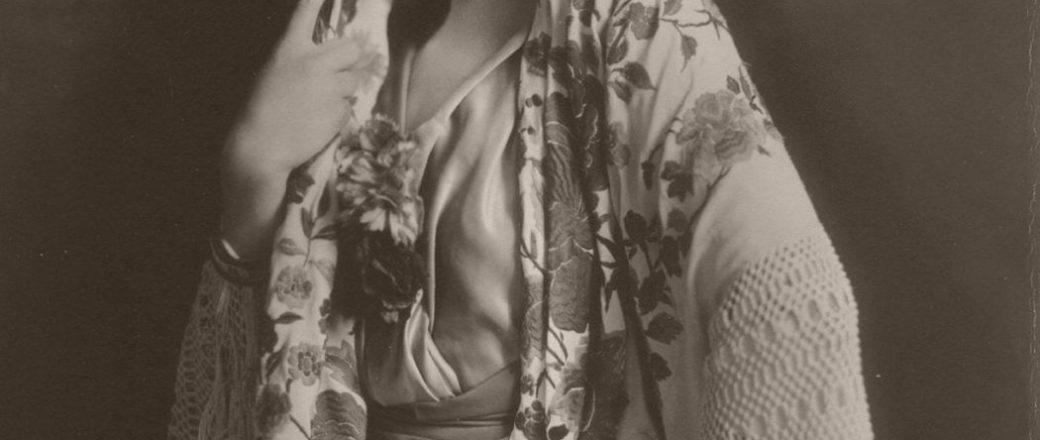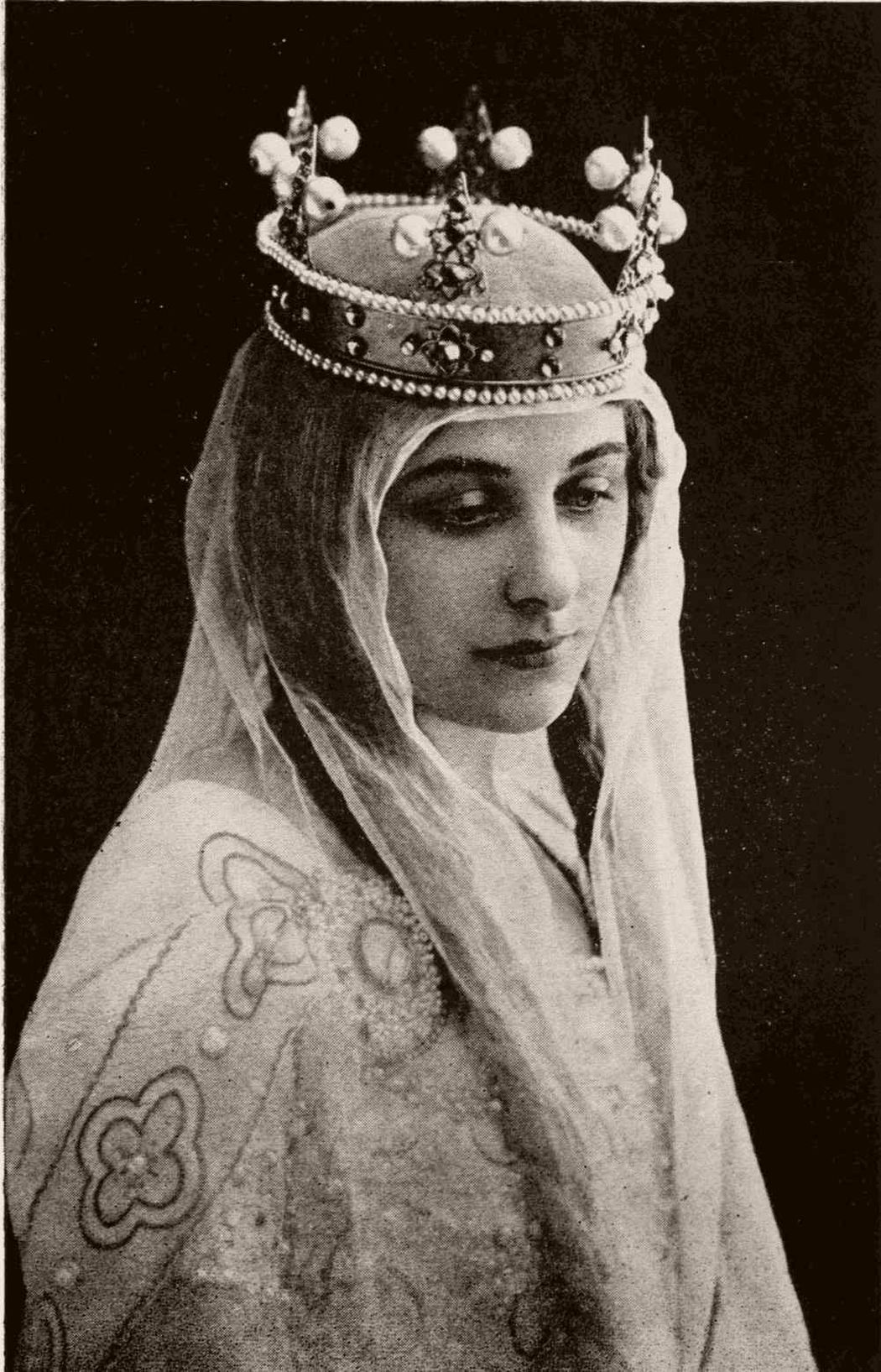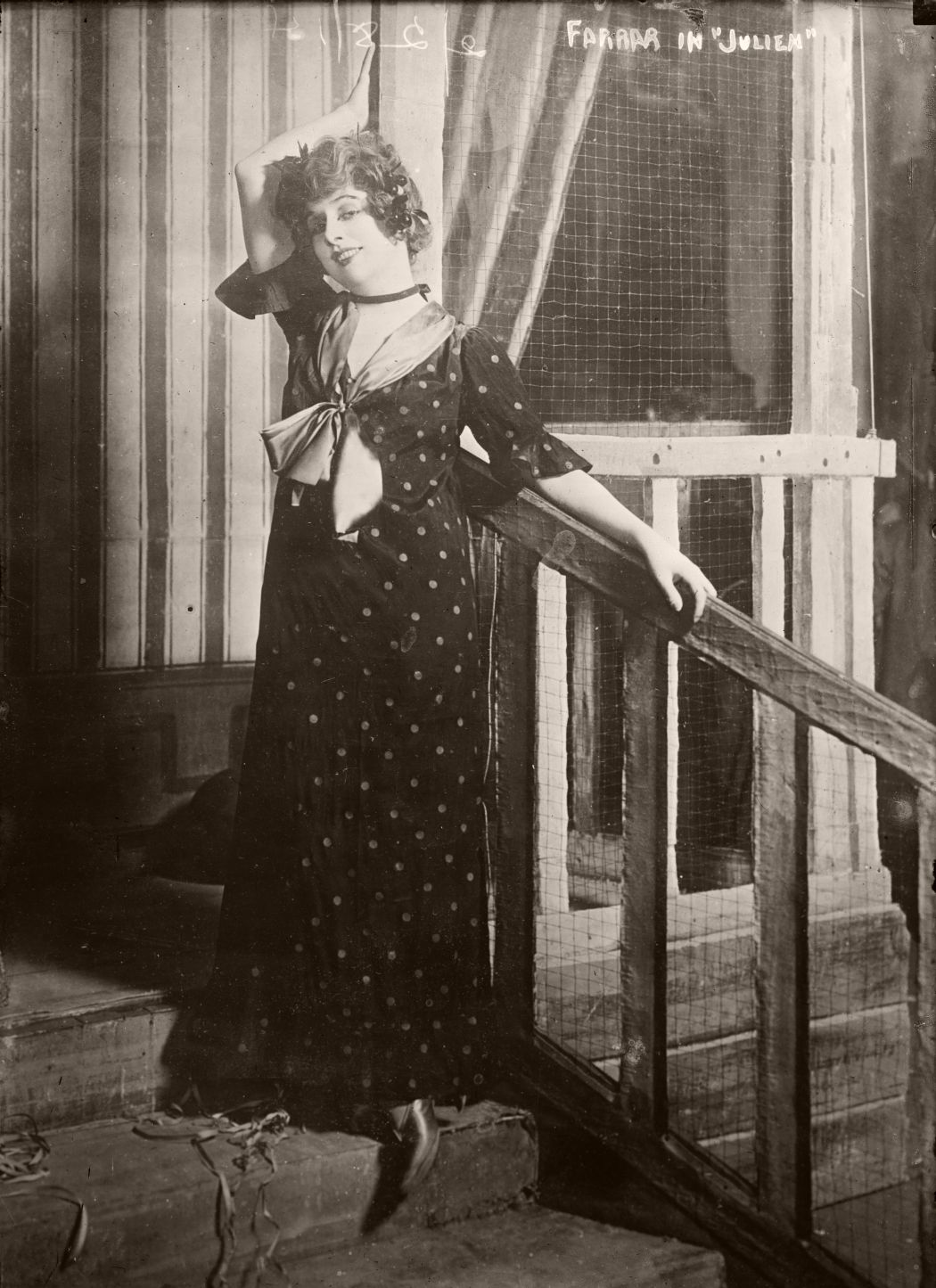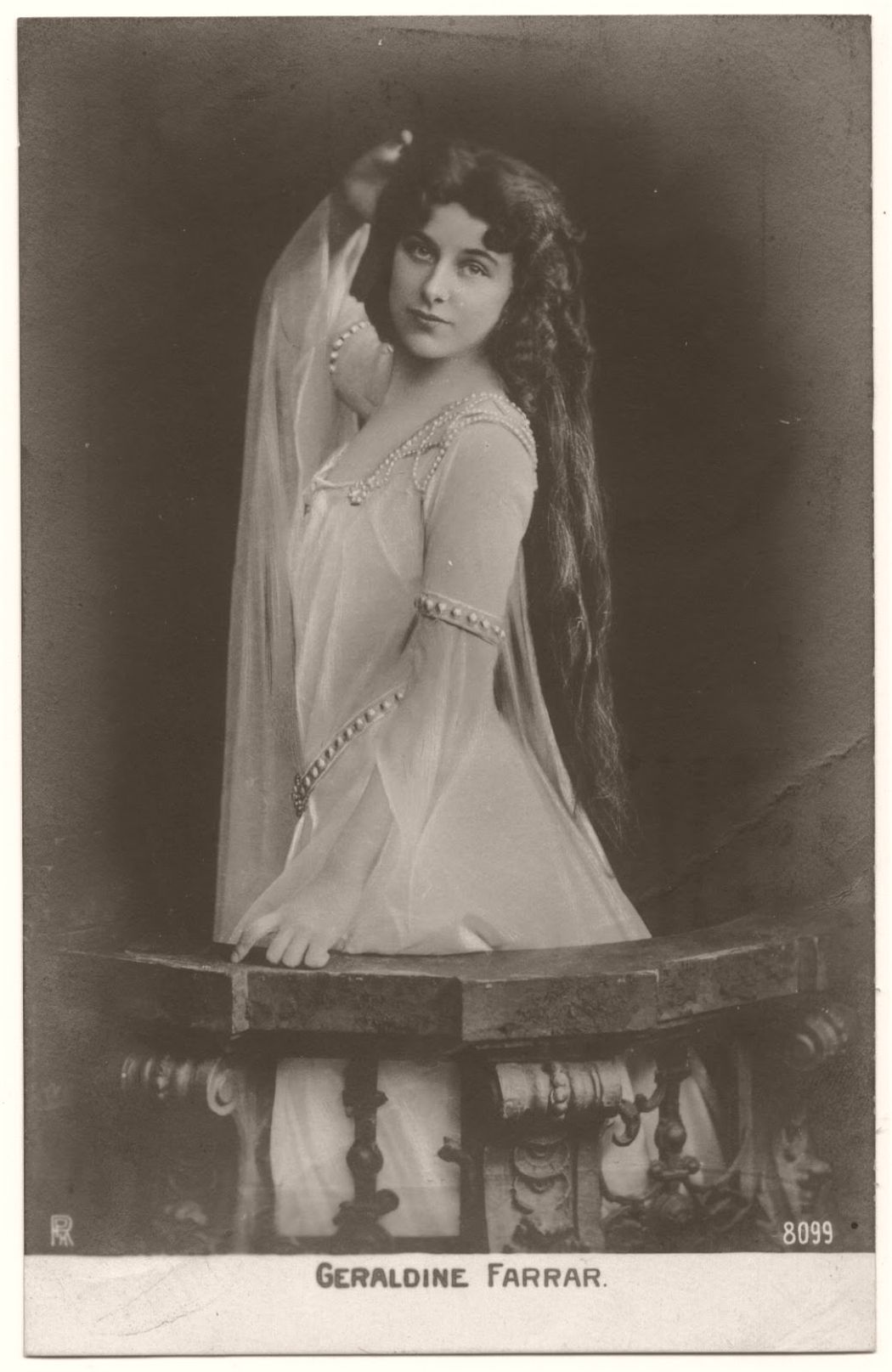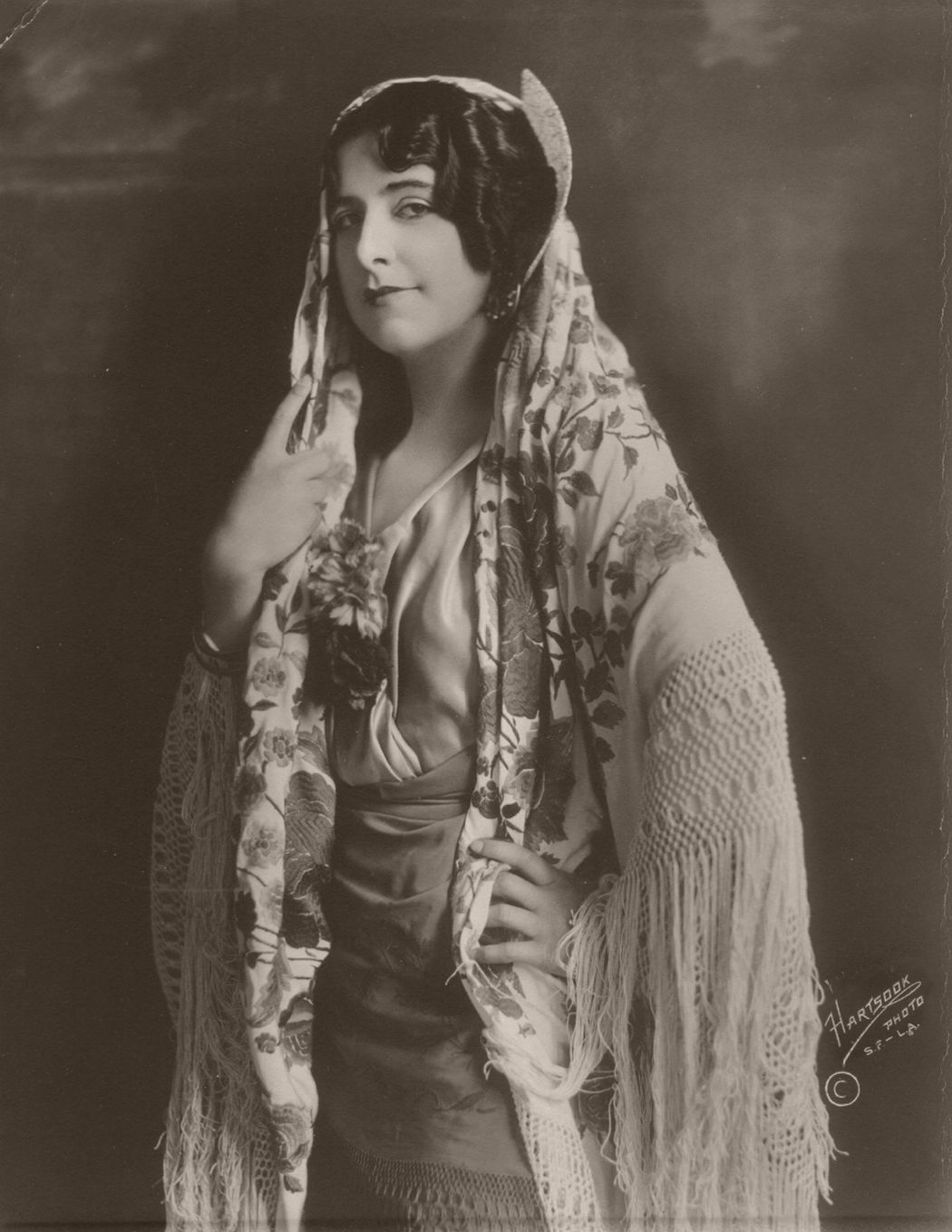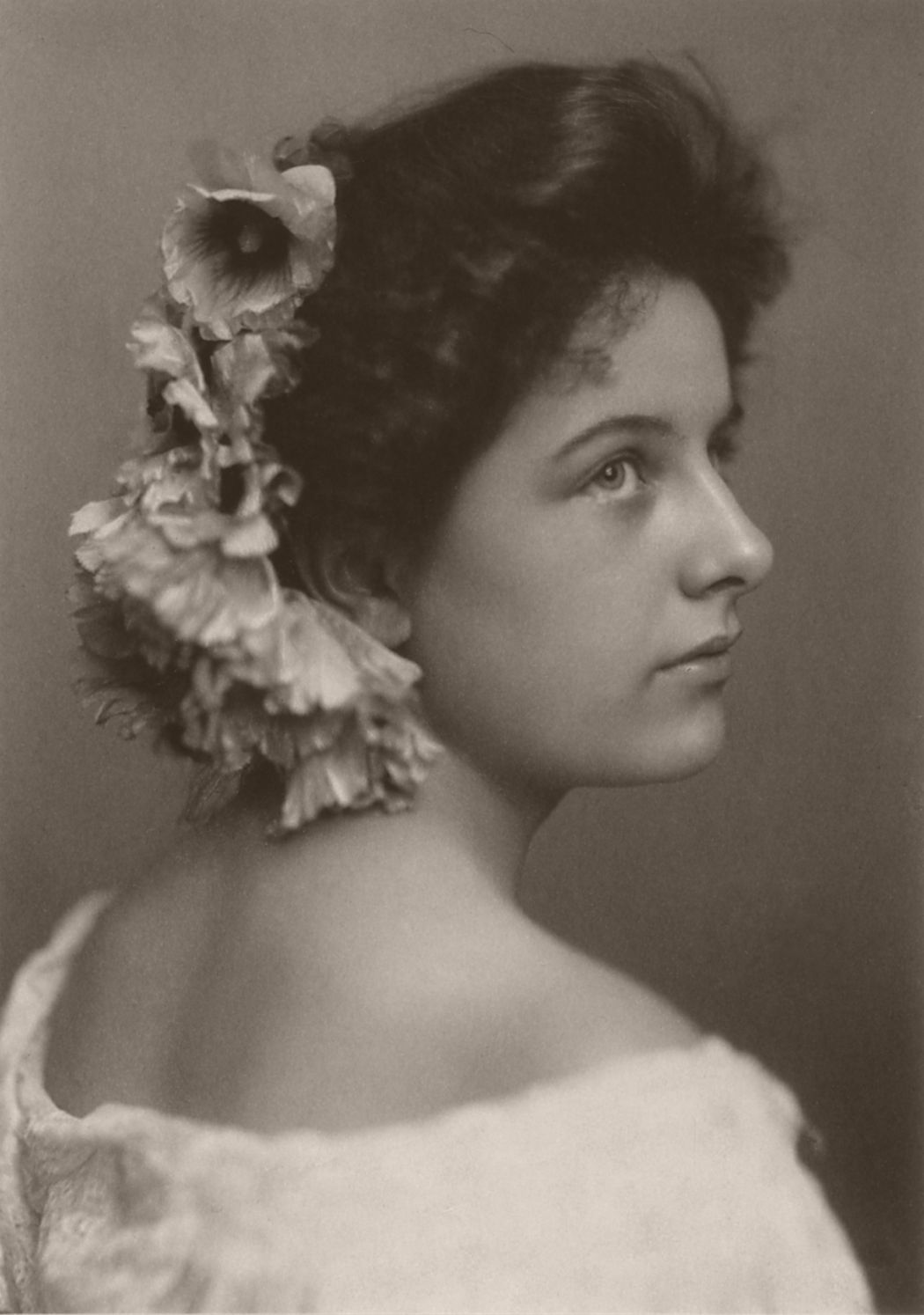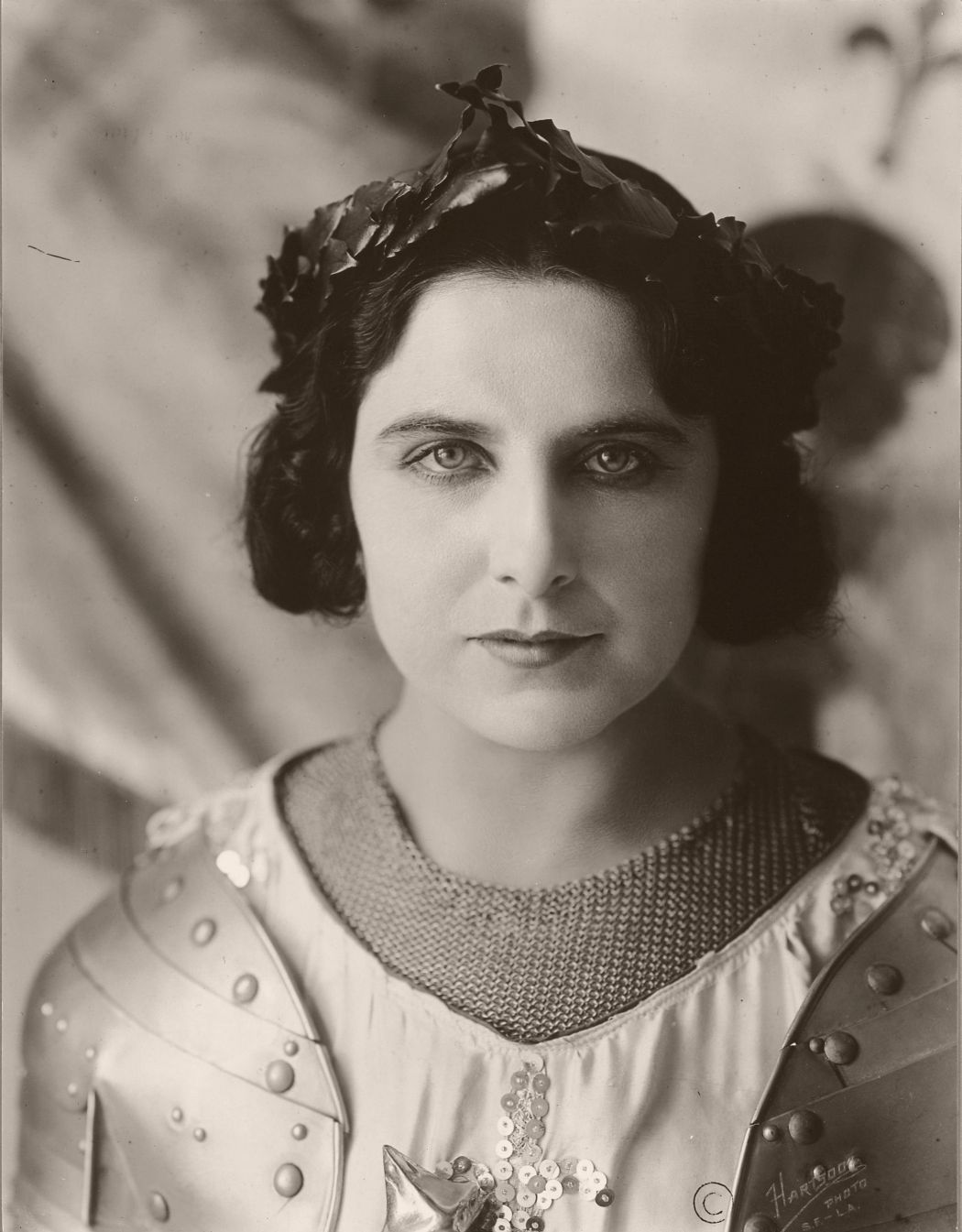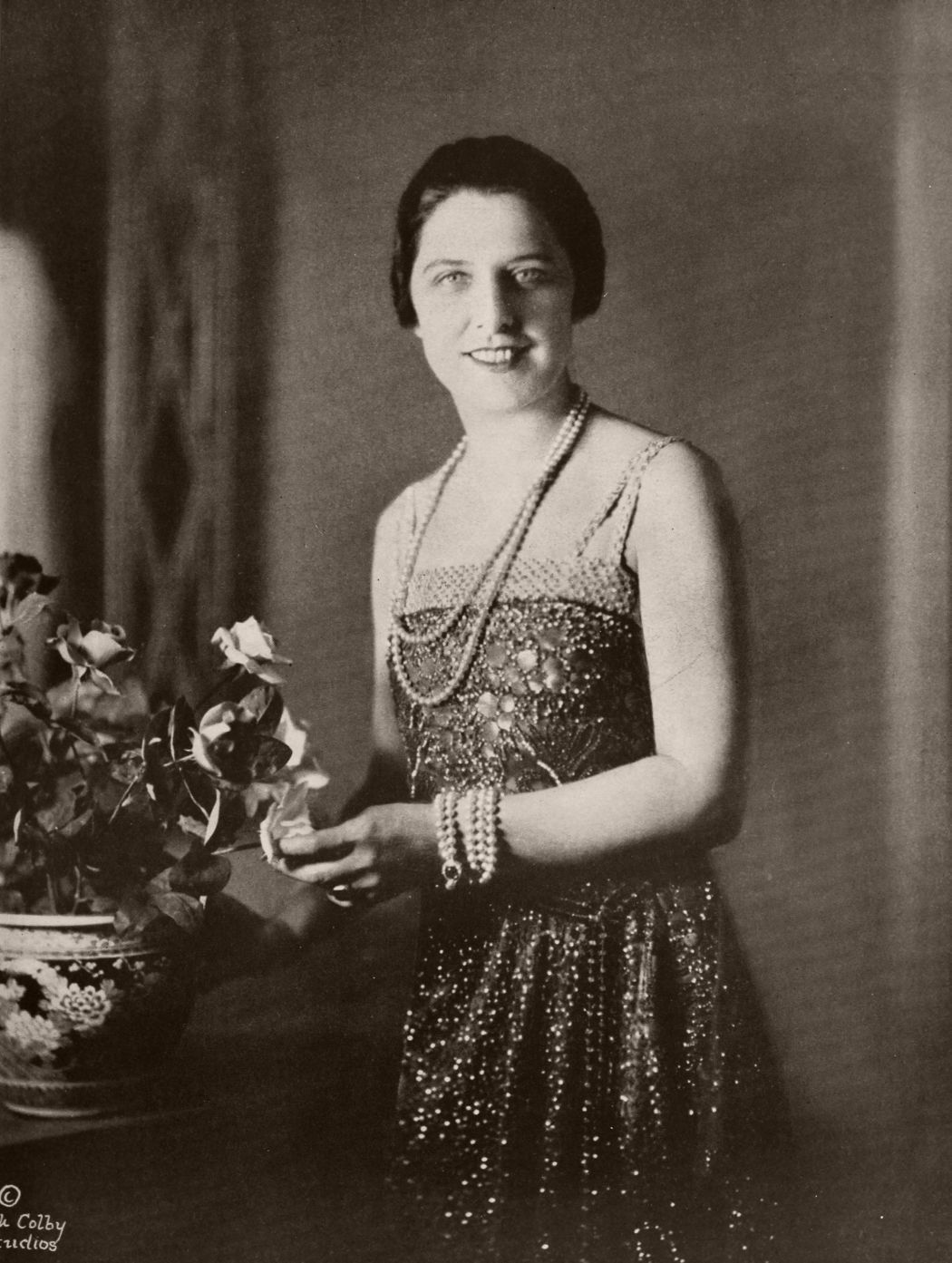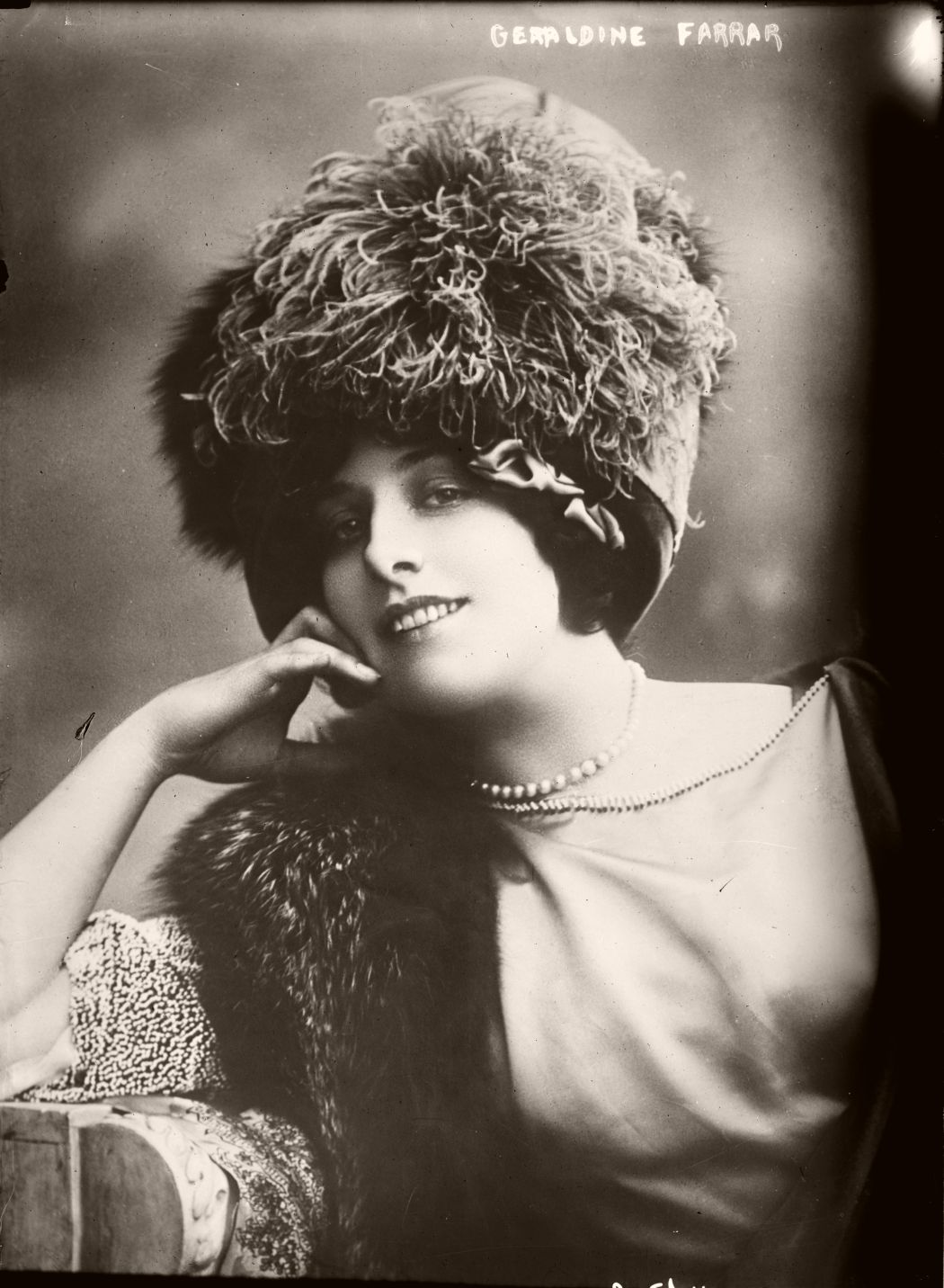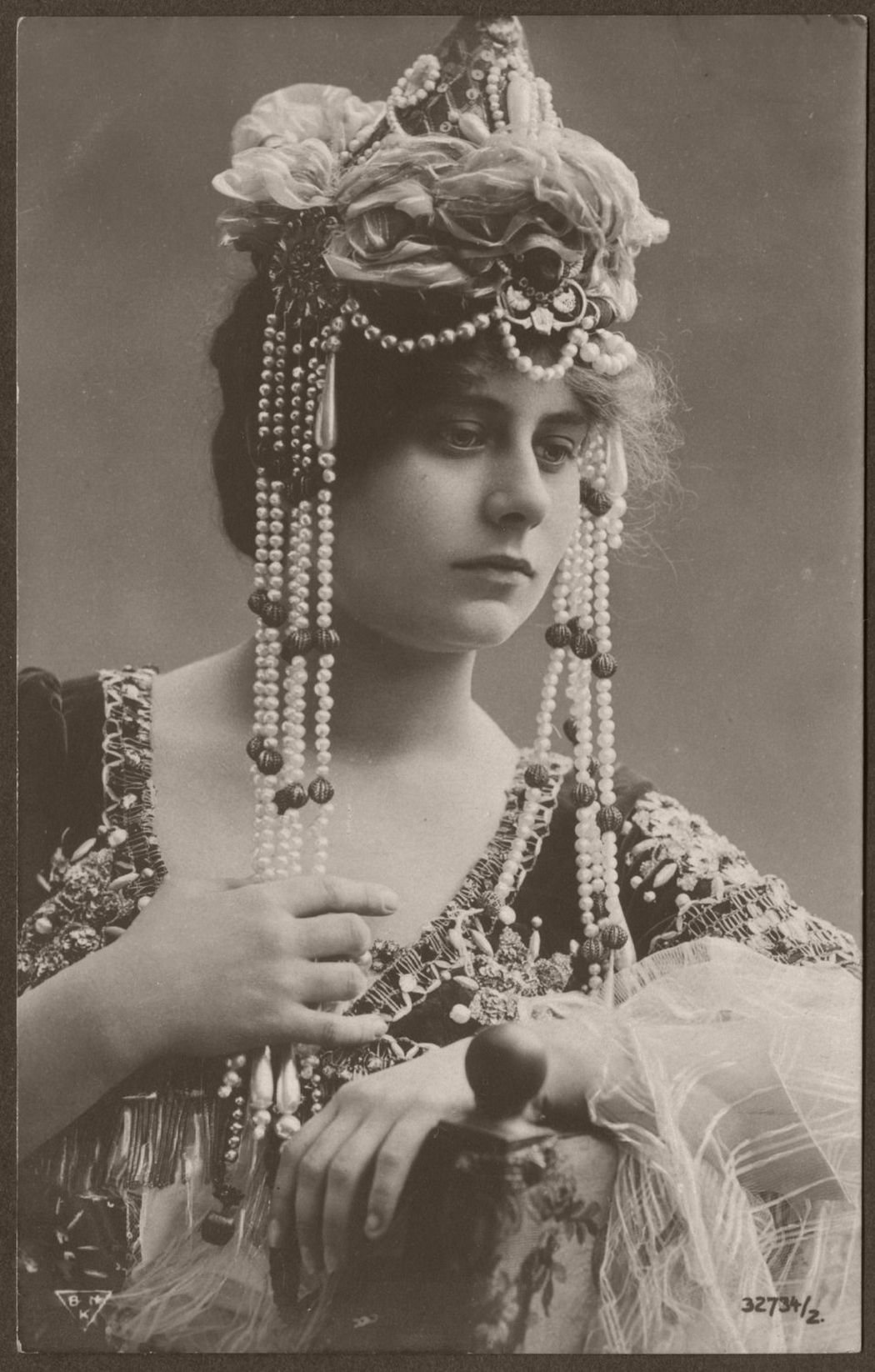Geraldine Farrar (1882- 1967) was an American soprano opera singer and film actress.
Farrar was born in Melrose, Massachusetts, the daughter of baseball player Sidney Farrar, and his wife Henrietta Barnes. At age 5, she began studying music in Boston and by 14 was giving recitals. Later she studied voice with the American soprano Emma Thursby in New York City, in Paris, and finally with the Italian baritone Francesco Graziani in Berlin. Farrar created a sensation at the Berlin Hofoper with her debut as Marguerite in Charles Gounod’s Faust in 1901 and remained with the company for three years, during which time she continued her studies with famed German soprano Lilli Lehmann. (She had been recommended to Lehmann by another famous soprano of the previous generation, Lillian Nordica.) She appeared in the title roles of Ambroise Thomas’ Mignon and Jules Massenet’s Manon, as well as Juliette in Gounod’s Roméo et Juliette. Her admirers in Berlin included Crown Prince Wilhelm of Germany, with whom she is believed to have had a relationship beginning in 1903.
After three years with the Monte Carlo Opera, she made her debut at the New York Metropolitan Opera in Romeo et Juliette on November 26, 1906. She appeared in the first Met performance of Giacomo Puccini’s Madama Butterfly in 1907 and remained a member of the company until her retirement in 1922, singing 29 roles there in 672 performances. She developed a great popular following, especially among New York’s young female opera-goers, who were known as “Gerry-flappers”. Farrar created the title roles in Pietro Mascagni’s Amica (Monte Carlo, 1905), Puccini’s Suor Angelica (New York City, 1918), Umberto Giordano’s Madame Sans-Gêne (New York, 1915), as well as the Goosegirl in Engelbert Humperdinck’s Königskinder (New York, 1910), for which Farrar trained her own flock of geese. According to a review in the New York Tribune of the first performance, “at the close of the opera Miss Farrar caused ‘much amusement’ by appearing before the curtain with a live goose under her arm.”
She recorded extensively for the Victor Talking Machine Company and was often featured prominently in that firm’s advertisements. She was one of the first performers to make a radio broadcast in a 1907 publicity event singing over Lee De Forest’s experimental AM radio transmitter in New York City. She also appeared in silent movies, which were filmed between opera seasons. Farrar starred in more than a dozen films from 1915 to 1920, including Cecil B. De Mille’s 1915 adaptation of Georges Bizet’s opera Carmen, for which she was extensively praised. “The resolution of Geraldine Farrar, the beautiful and gifted star, to employ her talents in the attaining of success in the films is one of the greatest steps in advancing the dignity of the motion pictures. Miss Farrar’s ‘Carmen’ in the films is the greatest triumph the motion picture has yet achieved over the speaking stage,” claimed the San Francisco Call & Post. For her performance, she came in fourth place in the 1916 “Screen Masterpiece” contest held by Motion Picture Magazine, ahead of any other actress. Theda Bara’s performance of the same role received 9,150 votes. One of her other notable screen roles was as Joan of Arc in the 1917 film Joan the Woman.

